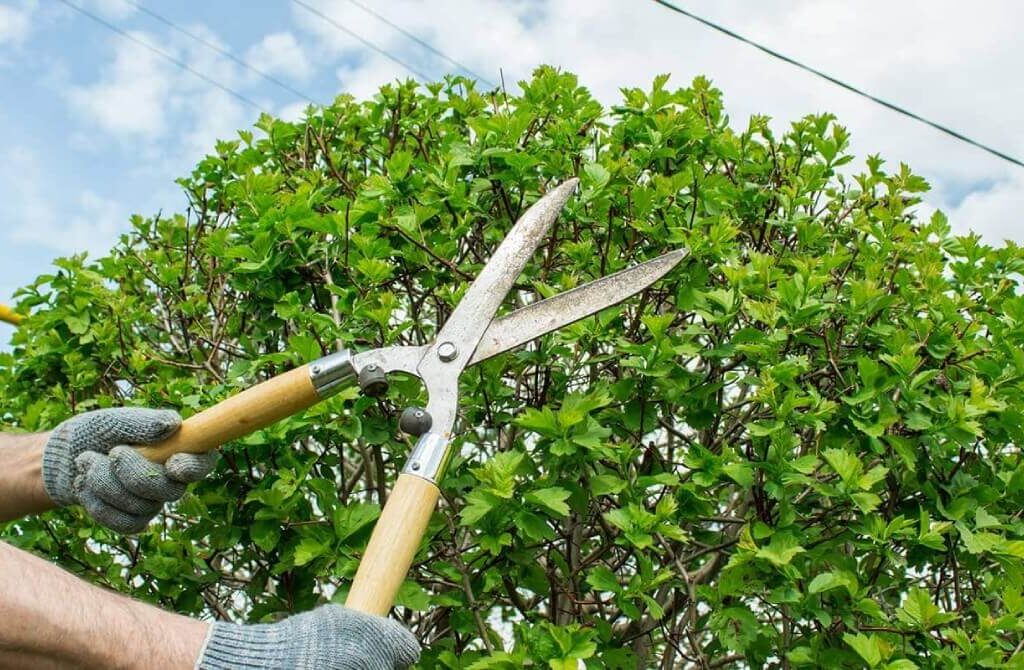Precision tree pruning is an essential practice for maintaining the health and aesthetics of trees. It involves carefully and thoughtfully removing specific branches to enhance tree growth, structure, and overall beauty. By understanding the importance of precision in tree pruning, the science behind it, and the art and expertise required, we can appreciate the value and benefits it brings.
The Importance of Precision in Tree Pruning
When it comes to tree pruning services near me, precision is key. Each cut must be made with a purpose, considering the tree’s health, structure, and long-term outlook. Precision pruning goes beyond just shaping the tree; it aims to improve its overall well-being and longevity.
Tree pruning is not a task to be taken lightly. It requires knowledge and expertise to ensure that each cut is made in the right place and at the right angle. This level of precision is crucial to avoid causing unnecessary harm to the tree and to maximize its benefits.
One of the primary reasons why precision pruning is so important is its role in maintaining tree health. By removing dead, damaged, or diseased branches, we eliminate potential points of infection or infestation. This promotes the tree’s natural defense mechanisms, allowing it to allocate resources to areas that need them the most.
Furthermore, precision pruning helps in improving the tree’s overall structure. By selectively removing certain branches, we can enhance the tree’s form and reduce the risk of weak or hazardous growth. This is particularly important in urban areas where trees are often subjected to various stresses, such as wind, pollution, and limited space.

The Role of Precision in Tree Health
Pruning with precision plays a significant role in maintaining tree health. It is not just about randomly cutting branches; it involves a careful assessment of the tree’s condition and needs. A skilled arborist will consider factors such as the tree’s species, age, and growth patterns before making any cuts.
By removing dead or dying branches, precision pruning prevents the spread of decay and disease. It also allows the tree to allocate its resources more efficiently, promoting healthy growth and development. In addition, precision pruning can help improve air circulation and sunlight penetration within the tree’s canopy, reducing the risk of fungal infections and promoting photosynthesis.
Aesthetic Benefits of Precise Pruning
Not only does precision pruning contribute to tree health, but it also enhances its appearance. Trees that are pruned with precision have a more balanced and visually appealing shape. By selectively removing branches, we can improve the tree’s symmetry and overall structure.
Furthermore, precision pruning allows us to create unique and artistic designs within the tree’s canopy. Skilled arborists can shape the tree in a way that complements the surrounding landscape, creating a harmonious and visually pleasing environment. This attention to detail showcases the artistic aspect of precision tree pruning and adds a touch of elegance to any outdoor space.
It is important to note that precision pruning should be done by trained professionals who understand the biology of trees and have the necessary equipment and expertise. Improper pruning techniques can lead to irreversible damage and even the death of the tree. Therefore, it is always recommended to hire a certified arborist to ensure the job is done correctly and safely.
The Science Behind Tree Pruning
Understanding the biology and growth patterns of trees is crucial when it comes to precision pruning. By comprehending how trees develop and respond to pruning, we can make informed decisions to maximize benefits and minimize risks.
Understanding Tree Biology and Growth
Trees have specific growth patterns and structures that vary from species to species. Their branches, buds, and trunk all have distinct characteristics and functions. By understanding these traits, we can strategically prune trees to encourage healthy growth and development.
For example, some tree species have a dominant central leader, which is a main vertical stem that grows upward. Pruning these trees involves selectively removing competing branches to maintain the central leader’s dominance. This pruning technique helps the tree maintain a strong and upright structure, reducing the risk of branch failure during storms.
Other tree species, such as those with a more spreading growth habit, may require a different approach. Pruning these trees involves selectively thinning out branches to allow more light penetration and air circulation within the canopy. This promotes the growth of lower branches and helps maintain a balanced and aesthetically pleasing shape.
The Impact of Pruning on Tree Physiology
Pruning has physiological effects on trees, and precision plays a pivotal role in managing these responses. Proper pruning cuts stimulate new growth, direct energy to specific areas, and promote structural integrity. However, improper pruning can lead to stress, decay, and vulnerability to diseases and pests.
When a tree is pruned correctly, it triggers a response known as compartmentalization. This process involves the tree forming specialized cells around the pruning wound to seal it off from the rest of the tree. These cells help prevent the spread of decay and pathogens, ensuring the tree remains healthy and resilient.

Furthermore, precision pruning can influence the direction of growth. By selectively removing certain branches, arborists can redirect the tree’s energy towards desired areas. For example, if a tree is leaning towards a structure or obstructing a view, strategic pruning can encourage it to grow in a different direction, mitigating potential hazards and enhancing the tree’s overall form.
It is important to note that pruning should be done at the right time of year to minimize stress on the tree. Different tree species have different optimal pruning times, and understanding these seasonal variations is crucial. Pruning during the dormant season, when trees are not actively growing, is generally recommended as it minimizes the impact on the tree’s resources.
In conclusion, tree pruning is not just a simple task of cutting branches. It requires a deep understanding of tree biology and growth patterns, as well as the physiological responses that pruning triggers. By employing precision pruning techniques, arborists can enhance the health, structure, and aesthetics of trees, ensuring their long-term vitality and resilience.
The Art of Precision Pruning
Becoming a master pruner requires not only scientific knowledge but also the expertise to execute precise cuts. Along with a deep understanding of tree biology and growth, certain tools and techniques are essential for achieving optimal results.
When it comes to precision pruning, attention to detail is key. Every cut made has the potential to impact the overall health and appearance of the tree. Pruning is not simply about removing branches; it is a delicate process that requires careful thought and consideration.
The Tools of the Trade
Pruning tools must be sharp, clean, and appropriate for the task at hand. Hand pruners, loppers, pruning saws, and pole pruners are some of the common tools used for precision pruning. Each tool serves a specific purpose and is designed to make clean, precise cuts.
Hand pruners, also known as secateurs, are perfect for trimming small branches and twigs. They are lightweight and easy to maneuver, allowing for precise cuts in tight spaces. Loppers, on the other hand, have long handles that provide extra leverage for cutting thicker branches. With their sharp blades and sturdy construction, loppers are ideal for removing larger branches.
For branches that are out of reach, pole pruners come in handy. These tools consist of a long pole with a pruning head at the end, allowing the pruner to reach high branches without the need for a ladder. Pruning saws, with their sharp teeth and curved blades, are used for cutting through thicker branches and trunks.
Utilizing the right tool ensures clean cuts and minimizes damage to the tree. Dull or dirty tools can tear the bark and create jagged cuts, leaving the tree vulnerable to disease and pests. Regular cleaning and sharpening of pruning tools are essential for maintaining their effectiveness.
Techniques for Precise Pruning
Various pruning techniques are employed to achieve specific outcomes. These include crown thinning, crown raising, crown reduction, and structural pruning. Each technique requires careful consideration of branch selection, cutting angles, and timing to achieve desired results while minimizing stress on the tree.
Crown thinning involves selectively removing branches to reduce the density of the tree’s canopy. This allows for better air circulation and sunlight penetration, promoting overall tree health. Crown raising, on the other hand, focuses on removing lower branches to create clearance underneath the tree. This technique is often used to prevent obstruction of views or to provide space for pedestrians and vehicles.
Crown reduction is a technique used to reduce the size of the tree’s canopy. By selectively removing branches, the overall height and spread of the tree can be reduced while maintaining its natural shape. Structural pruning, on the other hand, aims to improve the tree’s form and stability by removing weak or crossing branches.
Timing is crucial when it comes to precision pruning. Pruning during the dormant season, when the tree is not actively growing, is generally recommended. This allows the tree to allocate resources towards healing and regrowth. However, certain trees may have specific pruning requirements, and it is important to consult with an arborist or horticulturist for guidance.
In conclusion, precision pruning is an art that requires both knowledge and skill. By utilizing the right tools and techniques, pruners can enhance the health, beauty, and longevity of trees. Whether it’s shaping a small ornamental tree or maintaining the majestic canopy of a mature oak, precision pruning is a vital practice for arborists, landscapers, and tree enthusiasts alike.

The Expert’s Approach to Tree Pruning
Pruning trees with expertise is a specialized skill that goes beyond basic techniques. Experienced arborists and tree care professionals bring both technical knowledge and practical insights to achieve exceptional results.
The Pruning Process: An Expert’s Perspective
An expert pruner evaluates each tree individually, considering its species, age, condition, and location. They assess its structural integrity, potential risks, and long-term goals. The pruning process involves careful planning, execution, and post-pruning evaluations to ensure the best outcomes.
Essential Skills for Precision Pruning
Beyond technical know-how, precision pruning requires other essential skills. Effective observation, attention to detail, and the ability to make thoughtful decisions are crucial. Additionally, communication skills are vital to understand the client’s vision and translate it into actionable pruning plans.
The Consequences of Improper Pruning
While precision pruning offers numerous benefits, improper pruning can have severe, long-lasting consequences for trees. Understanding common mistakes and the detrimental effects they can have is crucial for avoiding these pitfalls.
Common Pruning Mistakes and Their Impact
Improper pruning techniques, such as topping or excessive crown reduction, can weaken trees and lead to structural instability. Improper cuts can introduce infections, pests, and decay, impacting the tree’s health and overall longevity.
The Long-Term Effects of Poor Pruning Practices
Poor pruning practices can have long-term consequences, impacting the tree’s growth, aesthetics, and even its survival. Trees subjected to improper pruning may develop weak branch structures, increased vulnerability to pests and diseases, and reduced overall vigor.
In conclusion, the fine art of precision tree pruning combines scientific knowledge, practical expertise, and a deep understanding of trees’ biology and growth patterns. By approaching pruning with precision, we can ensure the health, beauty, and longevity of our trees, creating harmonious landscapes and contributing to a greener world.

